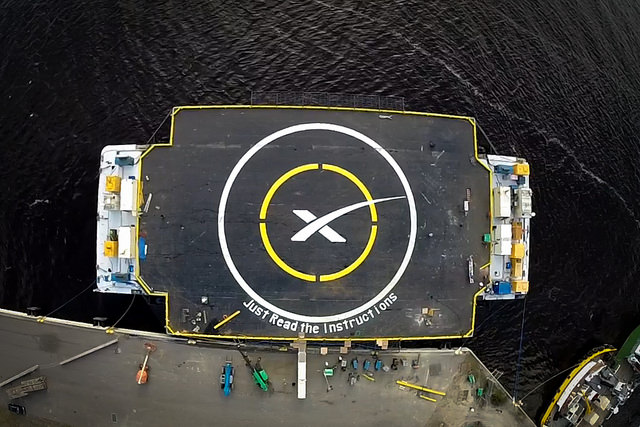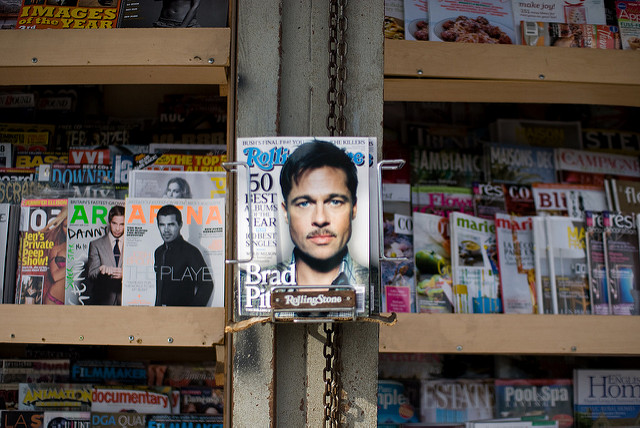Unlock the Magic in Your Story Now
Get the Free 20 questions to Ask Before Launching Your Idea workbook when you sign up for occasional updates.
Get the Free 20 questions to Ask Before Launching Your Idea workbook when you sign up for occasional updates.
The Most Underrated Sales Tactic In The World
 The woman who was shopping for a travel wallet asked the assistant if there was anything available in the sale.
The woman who was shopping for a travel wallet asked the assistant if there was anything available in the sale.
“Not in store, but you could try our website. There could be something there,” she said.
The customer explained that she was travelling tomorrow, and left the store disappointed and empty-handed, even though there were six different lines of travel wallet on the shelves. Meanwhile, the owner lost the sale all because the assistant forgot to be interested.
Being curious about who your customer is, why she’s here and what she wants to do next is the most underrated sales tactic in the world. When we show people that we’re interested and go out of our way to help them they often respond. I know this seems obvious, but we can all remember a time when we left a store or restaurant disappointed because the staff forgot to go beyond exactly what was laid out in the company training manual.
If we can’t give the customer the answer she’s hoping for then the next best thing is to acknowledge that we see her.
Image by Lee Martin.
Share this article
No Success Without Fear
filed in Entrepreneurship, Strategy
 When Elon Musk unveiled his audacious vision to colonize Mars this week, commentators had as much to say about his hubris and lack or fear as they did about the plan itself. They remarked that Musk’s greatest strength is probably that he has never been afraid to fail. That’s just not true.
When Elon Musk unveiled his audacious vision to colonize Mars this week, commentators had as much to say about his hubris and lack or fear as they did about the plan itself. They remarked that Musk’s greatest strength is probably that he has never been afraid to fail. That’s just not true.
Of course he has. If he weren’t afraid of failure, he wouldn’t be invested in success. You can’t simultaneously care about something and then shrug your shoulders in the face of failure.
Fear and success go hand-in-hand.
The difference between Musk and many of us is what he fears more than failing, is not giving it his best shot. Our fear of failure has never been more real than it is today, in a world where we have more power than ever to determine our path in work and life. It’s scary as an entrepreneur to be the one creating the ideas, launching the business or leading the team without someone higher up the food chain to blame if it goes wrong. It’s also thrilling to know you are responsible when it works.
When you look back at anything you’ve achieved (however small), you realise that your success was always preceded by fear. And it will be again. You might not be on a mission to Mars, but your mission feels just as important and scary to you as Elon Musk’s feels to him. The fear is a sign that you care, and that you’re doing meaningful work. Don’t let it hold you back.
Image by SpaceX.
Share this article
Clever Vs. Consistent
 The advert for cheap flights to L.A. simply read:
The advert for cheap flights to L.A. simply read:
Los Angeles. From/one way, incl taxes.
£169*
It was clever of the marketing department to pick up on the news that’s top of mind and there’s no doubt the ad got plenty of attention in the moment. Maybe the airline even sold some extra flights.
It’s tempting to be the kind of marketer who seeks fleeting attention to boost short-term outcomes or the kind of leader who rewards it. It’s much harder to be the one who consistently delivers value by making and keeping promises to customers you care about, not just on the days when there’s a juicy headline to ride the coattails of.
Image by Tsega Dinka
Share this article
Surviving Peak Utility
filed in Strategy
 When I was a child our family doctor operated a first come, first served, clinic without an appointment system. Some patients arrived three hours before the clinic was due to start to make sure they’d be seen first and a two-hour wait to see the doctor was not uncommon.
When I was a child our family doctor operated a first come, first served, clinic without an appointment system. Some patients arrived three hours before the clinic was due to start to make sure they’d be seen first and a two-hour wait to see the doctor was not uncommon.
“Evening folks.” Dr. Mac said, as he walked through the waiting room to his office, where he would smoke a quick cigarette before seeing the first patient. True story! In those days the family doctor was akin to a god and people accepted the wait and inconvenience without complaint.
Dr. Mac lived and worked in a world with fewer doctors and no prescribing pharmacists, nurse practitioners or alternative medicine, so his services (no matter how average) were highly valued.
Today, in the Western world where patients have endless treatment choices and are better informed about their health, things look very different for family doctors. Patients are no longer happy to wait an hour for a brief consultation with the doctor when they can get more convenient access and treatment, or a much better experience elsewhere. What was once viewed as an invaluable professional service is now almost seen as a standard utility. The reality is that people don’t just want to the doctor to make them better. They want to feel better. And they are choosing alternatives (sometimes more expensive ones) that deliver that feeling.
The same story is playing out across every industry from transport to travel, health to hospitality. Monopolies are being eroded as alternative services that provide better experiences and give people what they want, when and how they want it are thriving.
Dr. Mac would not survive today, not because minor illnesses or their treatment have changed all that much in forty years, but because people’s expectations about what’s worth seeking out, waiting and paying for have changed beyond all recognition. We have reached ‘peak utility’—we are living at a time when average products and standard services are becoming less valuable by the day. Our customer’s and user’s expectations have shifted and if we want our businesses to survive and thrive we have no alternative but to move with them.
Image by Jason Parks.
Share this article
Here Today, Here Tomorrow
 In a digital business world where it’s believed everything can be measured there is an assumption that an action will result in a reaction. Much of our marketing is now created with the expectation that it will deliver an immediate (albeit short-term) reward. Of course, the best marketing doesn’t work this way. Immediate payoffs rarely lead to sustained results. Consider the difference between the ‘All You Can Eat’ promotion targeting casual passers-by and the restaurant that consistently delights customers who return.
In a digital business world where it’s believed everything can be measured there is an assumption that an action will result in a reaction. Much of our marketing is now created with the expectation that it will deliver an immediate (albeit short-term) reward. Of course, the best marketing doesn’t work this way. Immediate payoffs rarely lead to sustained results. Consider the difference between the ‘All You Can Eat’ promotion targeting casual passers-by and the restaurant that consistently delights customers who return.
When we adopt a short-term worldview it changes the stories we tell. We optimise our messaging for conversion at the expense of connection. Our attitudes and resulting actions demonstrate that we value quick wins over continuous progress.
The great work you do today might take months or even years to have an impact on your bottom line. You have the power to choose whether you’re here for today or tomorrow.
Image by Kerry Lannert.
Share this article
Kickstart Your Marketing Strategy With The Right Question
filed in Marketing, Storytelling
 The advert at the tram stop tells passers-by to use this brand of mouthwash if they want to ‘wake up with a bang’. How did the company make the leap from their product to that story—the one they believe their prospective customer wants to hear?
The advert at the tram stop tells passers-by to use this brand of mouthwash if they want to ‘wake up with a bang’. How did the company make the leap from their product to that story—the one they believe their prospective customer wants to hear?
Every brand story or marketing strategy starts a question. That question is the foundation upon which your story is built. When you begin by wondering how to sell more mouthwash, you get a different answer than if you start by asking what makes people buy mouthwash in the first place. It’s only by starting with the right question that you can tell a story that resonates with the customer—one that connects your product or service with the customer’s wants and needs.
Your marketing will succeed when you understand the answers the customer is hoping to find when he looks in the mirror. Your brand story should help him to find them.
Image by Jonathan Kos-Read
Share this article
The Feedback You Invite Vs. The Feedback You Need
 The air stewardess in the business class cabin was busy, but not overrun. She spent the majority of her time with one executive passenger in her section throughout the flight. A friend who was returning from an overseas holiday asked for a cup of tea. Ninety disappointing minutes and four more requests later it eventually arrived.
The air stewardess in the business class cabin was busy, but not overrun. She spent the majority of her time with one executive passenger in her section throughout the flight. A friend who was returning from an overseas holiday asked for a cup of tea. Ninety disappointing minutes and four more requests later it eventually arrived.
As the passengers left the flight at the end of their journey the stewardess handed the executive a feedback form. My friend left empty handed, full of valuable feedback the airline would never hear and unlikely to book with them again.
Our fear of being vulnerable to criticism sometimes means we don’t seek the feedback we need most. Even in a data-driven world, we can still game the system and so we miss the opportunity to make a real difference.
We only see what’s in the corners where we shine the light.
It takes courage to shine it in the darkest places.
Image by Kevin Morris.
Share this article
Marketing Constants
 If you’re running a business, you’ll hear some version of the following every other day.
If you’re running a business, you’ll hear some version of the following every other day.
Things have changed.
And there’s no doubt that they have.
Things have changed since the Internet became ubiquitous, since Facebook launched, since newspaper advertising died, since the iPhone, Amazon.com, ad blockers and on and on.
But what hasn’t changed?
People. The people who buy things for the reasons they buy things. Because they’re scared or lonely. Because they want to be seen and understood. Because they need comfort or reassurance. Because they are sad or insecure. Because they want to be happy or make memories.
These people who you want to be your customers are your constant.
As we’ve wrestled with doubts about trends and marketing shifts, and worried about which tactics will work where and when. We’ve lost sight of the fact that we’re still dealing with people whose wants and needs and unspoken desires haven’t changed at all.
Image by Scooter Lowrimore.
Share this article
What’s Your Customer’s Value Story
filed in Storytelling, Strategy
 You may have read some version of the recent Tech Crunch article by Tom Goodwin that began with this observation.
You may have read some version of the recent Tech Crunch article by Tom Goodwin that began with this observation.
“Uber, the world’s largest taxi company, owns no vehicles. Facebook, the world’s most popular media owner, creates no content. Alibaba, the most valuable retailer, has no inventory. And Airbnb, the world’s largest accommodation provider, owns no real estate.”
There’s a lot of buzz around the Internet and in business publications about how businesses win by owning the customer interface—in other words, the environments where people go to interact and transact. But I think we’re missing something when we talk about the value of platforms and the ease at which anyone with a laptop and an Internet connection can build ‘the next big thing.’
The code isn’t the hard part.
Understanding what people want and value enough to pay for it is the hard part.
Uber’s founders, Travis Kalanick and Garrett Camp realised that people would pay for, and become loyal to a company that offered the convenience and certainty of a reliable transport solution.
I remember arriving at JFK airport one Friday evening as a storm hit. By the time I cleared immigration there was a line of two hundred people snaking around arrivals waiting for a cab.
You have never seen so many people trying to download an app all at once.
Not one of the companies that are grabbing headlines, from Uber to Airbnb started with a product or service. They started with the potential customer’s value story. The same is true for the most popular cafe in your neighbourhood and the Etsy store people always return to.
You create and market a successful product or service by figuring out your customer’s value story.
If you’d like to grow your business by understanding what people want and how to tell them the story they want to hear The Story Strategy Course will show you how. Registration is open now.
Image by Guillaume David
Share this article
The Weight Of Our Words
filed in Storytelling, Strategy
 The laminated sign next to the order and pay point at the cafe read:
The laminated sign next to the order and pay point at the cafe read:
“We can’t and we won’t serve you while you are ON the phone. We need to engage.”
These are the first words that greet every single customer (not just the rude ones).
On the flip side, when I email a colleague who has a key leadership role at a multi-billion dollar company, he always responds as if I was the person he most wanted to hear from that morning.
He goes out of his way to make everyone he touches feel like they matter.
Our words communicate much more than the messages we want people to hear. How we use them shapes our thoughts and character—it shows people what we value and conveys the truth about who we are. Our every word has the power to provoke or reassure, draw people in or push them away. We get to choose how well and how wisely we use them.
Image by Steve McClanahan